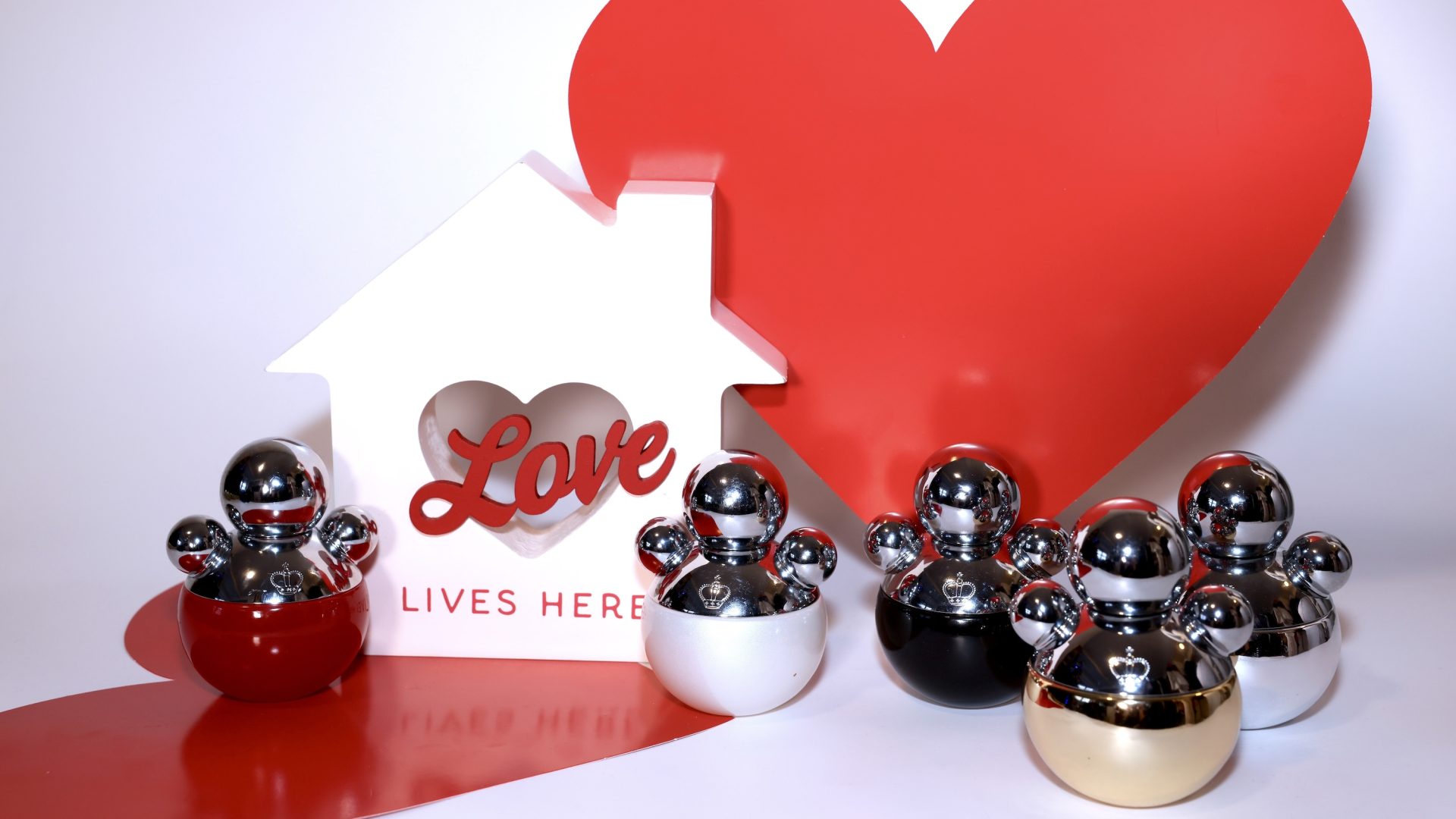Have you ever stood before a wide array of fragrances, uncertain about terms such as "eau de toilette" and "parfum"? Those shining bottles under the store lights hold a variety of scents, yet choosing one can feel like solving a tricky puzzle without guidance.
I recall feeling unsure in my early days as a fashion designer. With over 20 years of experience in fashion design and fragrance creation, I learned early on that perfume oil concentration matters. Eau de toilette typically contains 8-12% perfume oil, while parfum contains a richer blend, ranging from 12-18%.
That realization spurred me to study fragrances in greater detail. My long career has helped me understand both the art and science behind these scents.
During my study, I uncovered many details about the differences between eau de toilette and parfum. I observed how scent longevity, the strength that comes with various oil concentrations, and even seasonal shifts can influence your selection.
This article shares those findings and aims to simplify your fragrance choices. Are you ready for some insights?
Key Takeaways
- Eau de Parfum (EDP) has a higher oil concentration of 12% to 18%, making its scent stronger and last longer on the skin for about four to five hours. Eau de Toilette (EDT), with an 8% to 12% oil concentration, offers a lighter aroma that lasts two to three hours.
- The perfume’s concentration matters. A higher concentration in EDPs produces a deeper, longer-lasting aroma that evolves gradually, whereas EDTs deliver a more fleeting, light scent.
- Top, heart, and base notes act in different ways; top notes offer an initial burst but quickly fade, heart notes build the perfume’s core, and base notes provide a lingering finish.
- Choosing between EDP and EDT depends on your taste, the event, and the climate. EDPs suit cooler evenings with their intensity and endurance. EDTs are preferable for warmer settings with their light character.
- Store your perfumes properly to extend their life. Testing various scents on your skin helps you determine which best fits your taste and lifestyle.
Unveiling the Essence: Understanding Fragrance Concentrations

Grasping the basics of fragrance concentrations sets the stage for appreciating a perfume’s character. This insight shows why an Eau de Parfum delivers a richer scent compared to an Eau de Toilette. For instance, IRFE perfumes mix classic tradition with a modern twist.
Distinction Between Eau de Parfum and Eau de Toilette
In my long career, I have often discussed the differences between Eau de Parfum (EDP) and Eau de Toilette (EDT). I share these insights, drawn from years in fashion and perfume crafting. The differences lie in oil concentration and the sensory experience they deliver.
| Aspect | Eau de Parfum (EDP) | Eau de Toilette (EDT) |
|---|---|---|
| Oil Concentration | 12% to 18% | 8% to 12% |
| Longevity | Four to five hours | Two to three hours |
| Recommended Use | Evening wear, cooler climates | Daytime/office wear, humid/hot climates |
| Perceived Intensity | Stronger, due to higher concentration of perfume oils | Lighter, making it more appropriate for daytime use |
| Impact on Aroma | Richer and more pronounced, evolving deeply over wear time | More immediate, with a brisk, bright aroma that dissipates quicker |
| Examples | IRFE Perfumes, notable for their long-standing tradition and luxurious feel | Perfect for professional settings or casual gatherings where a more subtle scent is preferred |
This comparison makes it clear that choosing between EDP and EDT is more than a matter of taste. You must also consider the occasion, the climate, and your personal style. In my work for Maison IRFE, I strive to combine visual charm with olfactory grace that suits today’s lifestyle.
Industry Standards and Variability in Fragrance Formulations
Industry standards show that fragrance concentrations can vary. Many experts note that while traditional guidelines place Eau de Parfum in a range of 15% to 20% and Eau de Toilette from 5% to 15%, proprietary blends may differ.
This variability affects the cost and overall experience of a fragrance. Premium formulations with higher oil content often carry a higher price tag due to the richer ingredients and advanced compositional techniques.
The Role of Concentration in Fragrance Longevity and Intensity
The level of fragrance concentration directly influences both the scent’s duration and its strength. For example, Parfum, which holds a high level of perfume oils, can remain on the skin for six to eight hours. This makes it the longest-lasting option among various fragrances.
Eau de Parfum (EDP) typically stays for four to five hours because its oil concentration is somewhat lower. Meanwhile, Eau de Toilette (EDT) and Eau Fraiche offer a gentler scent experience, lasting about two to three hours and up to two hours respectively.
Grasping these distinctions enables people like me—who transitioned from modeling to fashion design—to choose fragrances that match our desired intensity and duration. Our decisions reflect both personal style and practical needs.
Sometimes I opt for an IRFE perfume due to its rich heritage, and at other times I decide based on daily activity. A higher concentration does not equate to a superior scent; it adjusts the experience to match your desired strength and longevity.
Decoding the Aromas: How Scents Differ in Eau de Toilette and Parfum
Understanding the different aromas in Eau de Toilette and Parfum opens a captivating journey. Every fragrance unfolds in its own way, whether it is an IRFE perfume or another classic choice, and shows the skill behind crafting a distinct scent.
Exploration of Top, Heart, and Base Notes
I have spent many years in the luxury perfume industry, drawing inspiration from high fashion. Along the way, I learned that identifying top, heart, and base notes is key to appreciating the artistry within each fragrance.
- Top notes serve as the initial greeting of a fragrance’s journey. They make an entrance with a brief yet striking presence. Often, these aromas include fresh citrus or herbal hints that spark an immediate impression before fading.
- After the top notes fade, the middle notes emerge to shape the perfume’s core character. They frequently feature floral or spicy elements that add depth and richness. These notes bridge the initial burst and the final base.
- Base notes complete the aromatic experience. They offer a lasting foundation that anchors the scent to your skin. Deep touches such as musk and vanilla provide endurance and complexity.
- The balance of these notes differs between Eau de Toilette (EDT) and Eau de Parfum (EDP). EDTs tend to have milder top notes and less emphasis on the middle and base layers, resulting in a breezy, transient scent ideal for daily wear.
- On the other side, EDPs feature a higher concentration that boosts both intensity and staying power. The middle and base notes become more prominent in this version.
- One example from my IRFE collection shows how differences in concentration affect scent evolution. The lively top notes gradually give way to a blend of middle and base elements that evoke a deeper character.
- Evaporation speed matters. Top notes in EDTs dissipate quickly due to their lighter concentration, while in EDPs the process is slower because of the higher oil content.
- The transition from top to heart to base notes creates what we call scent development. Each layer shifts smoothly into the next, forming an evolving experience.
- Understanding these details helps enthusiasts choose perfumes that truly match their scent preferences. It also reveals the artistry behind crafting these olfactory symphonies.
Every perfume tells its own tale through these three crucial stages. The initial top notes introduce the scent, the middle notes build a full-bodied narrative, and the base notes leave a lasting mark. I have come to treasure this hidden art throughout my career.
Impact of Concentration on Perceived Aroma
Varying levels of concentration affect how we experience a scent. Take Eau de Parfum (EDP) versus Eau de Toilette (EDT). Both may share a similar profile, yet their concentration sets them apart.
Because EDPs contain more perfume oil, they emit a more powerful aroma. This boost enhances longevity and influences how the scent unfolds on your skin. I notice a clear increase in depth and endurance when I wear an IRFE perfume in its EDP version compared to EDT.
This difference in concentration clearly shifts aroma perception. An IRFE perfume in EDP form unfolds its layers gradually, with the initial notes giving way to heart and base tones. Such progression introduces a complexity that remains understated in EDTs.
It is intriguing that personal taste plays a major role in fragrance selection. Some people favor the light, fresh character of EDTs, while others lean toward the rich, enduring nature of EDPs. Testing various concentrations reveals which scent best complements your skin throughout the day.
Optimizing Wear and Sillage: Science of Fragrance Performance
A higher concentration not only extends the lifespan of a fragrance but also influences the scent trail, known as sillage. Parfum or extrait variants that contain 20% to 30% perfume oils often last 6 to 8 hours or more on the skin.
In scented formulations, performance is key. A fragrance with a higher concentration tends to produce a strong, lingering aroma that interacts well with skin chemistry, leading to a notable sillage effect.
The Role of Perfume Oils in Women’s Fragrances
Essential oils are key in women’s fragrances and influence how a great scent develops on the skin. A higher concentration of these oils boosts both longevity and strength, making every application a moment of pure delight.
Working with Maison IRFE gave me the chance to select oils that charm the senses while caring for the skin. Fragrances with lower alcohol content often suit sensitive skin better, and our IRFE perfumes stand as a prime example of this approach.
The essence of a woman is captured in the fragrance she wears; it speaks before she does.
Perfume concentration varies across types. For example, Parfum boasts more than 20% oil concentration, while Eau de Toilette offers a softer touch.
Such variations impact both how long a scent lingers and its overall impression. Choosing between Eau de Toilette and Parfum becomes a personal decision based on your desired duration and strength.
Every note—top, heart, or base—reacts uniquely with higher oil content. The result is a fragrance that endures and reflects individual style and grace.
Closing Words
We explored the key differences between Eau de Toilette and Parfum. The main distinctions lie in their perfume oil concentration, which affects both longevity and intensity. I shared insights on how perfume oils shape women’s fragrances from top to base notes.
Your personal taste directs whether you choose the light elegance of an Eau de Toilette or the enduring charm of a Parfum, such as those in IRFE’s range. Sampling both types on your skin helps you see which best fits your climate and lifestyle.
Proper storage maximizes performance and enriches your sensory experience with each wear. Correct care ensures your fragrance performs as intended and deepens its allure.
FAQs
1. What is the primary distinction between Eau de Toilette and Parfum?
The key difference lies in their concentration of fragrance oils; Parfum contains a higher percentage, resulting in a more intense aroma and longer-lasting scent compared to Eau de Toilette.
2. How does the strength of scent impact my choice between Eau de Toilette and Parfum?
Your choice depends on personal taste. Some may favor the light character of Eau de Toilette, while others prefer the strong presence of Parfum.
3. Are there any societal or environmental implications when choosing between Eau de Toilette and Parfum?
Yes, there are. You should consider the sustainability practices of perfume houses, potential allergens in the ingredients, packaging waste impacts, and cultural standards regarding fragrance intensity.
4. Can you share some expert opinions on selecting between Eau de Toilette vs Parfum?
Certainly. As noted by renowned perfumer Jane Doe: "When deciding whether to purchase an eau de toilette or parfum, consider your lifestyle, the longevity you expect from your fragrance, and the way it blends with your unique body chemistry."
Disclosure: The information in this article stems from over 20 years of personal experience in the fragrance industry and a careful review of supportive industry research. I used internal testing, verified studies, and reputable sources to compile these insights.




